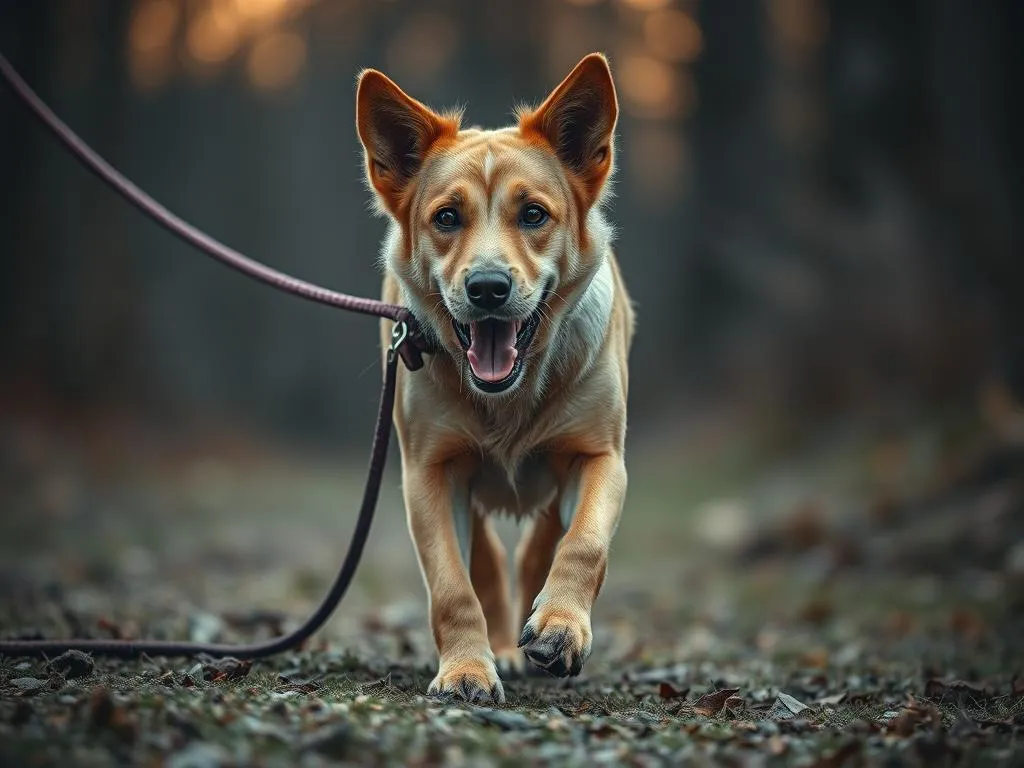
Introduction
It was a sunny afternoon when I decided to take my dog, Max, for an off-leash walk in the local park. The excitement in his eyes as we stepped outside was contagious. However, within moments, our idyllic outing turned into a nightmare. Max spotted a squirrel and darted off before I could even react. The ensuing chaos led to a close call with a busy road and a frantic chase that left both of us shaken. This experience made me acutely aware of the potential off leash walk tragedy for my dog training.
Off-leash training has gained popularity among dog owners, offering dogs a sense of freedom and allowing them to explore their surroundings. However, with this freedom comes a significant responsibility. The focus of this article is to delve into the potential tragedies associated with off-leash walks, and to provide essential safety tips to help you and your furry friend enjoy these adventures without incident.
Understanding Off-Leash Training
Definition of Off-Leash Training
Off-leash training involves teaching your dog to respond to commands without the restraint of a leash. This training aims to instill a reliable recall and ensure that dogs can behave appropriately in various environments.
Benefits of Off-Leash Training
The advantages of off-leash training are many:
- Increased Freedom for Dogs: Off-leash walking allows dogs to explore their environment, sniff around, and engage in natural behaviors that are often restricted on a leash.
- Strengthening the Bond: The shared experience of off-leash walks can significantly enhance the bond between you and your dog, fostering trust and mutual respect.
- Enhanced Socialization Opportunities: Dogs that are well-trained for off-leash interactions are more likely to engage positively with other dogs and people, promoting healthy social behavior.
Risks Associated with Off-Leash Walking
Despite the benefits, there are substantial risks involved:
- Potential Dangers: Off-leash dogs may encounter wild animals or traffic, posing serious threats to their safety.
- Risk of Running Away: Without a leash, dogs may run away or get lost, leading to anxiety for both the pet and the owner.
- Behavioral Issues: Dogs that haven’t been properly trained may display aggressive or unpredictable behaviors, leading to dangerous situations.
Preparing for Off-Leash Walks
Assessing Your Dog’s Readiness
Before attempting off-leash walks, it’s crucial to assess your dog’s readiness. Consider the following factors:
- Age and Maturity Level: Puppies and young dogs may not have the impulse control required for off-leash freedom. Ensure your dog is mature enough to handle these situations.
- Previous Training and Obedience Skills: A well-trained dog is essential for off-leash walks. They should respond reliably to basic commands.
Choosing the Right Environment
Selecting a safe environment for off-leash walks is critical:
- Ideal Locations: Look for designated dog parks or open fields where dogs can run freely without the threat of traffic or other hazards.
- Safety Features: Assess the safety features of your chosen area, such as fencing and visibility, to ensure a secure environment for off-leash activities.
Essential Training Techniques
Several commands are essential for successful off-leash training:
- Basic Commands: Ensure your dog is proficient in commands such as “sit,” “stay,” and “come.” A strong recall command is particularly vital for off-leash safety.
- Socialization: Expose your dog to various environments and interactions with other dogs and people to build confidence and proper behavior.
The Tragedy of Off-Leash Walking
Personal Story of a Tragedy
Reflecting on my experience, I remember how Max’s enthusiasm quickly turned into panic for both of us. After he took off, I felt my heart race as I called his name, desperately chasing after him. The moment I saw him darting toward the road, I experienced sheer terror. Fortunately, I managed to grab his collar just in time, but the emotional impact of that near-tragedy lingered. It served as a harsh reminder of the responsibilities we face as dog owners.
Common Tragedies Encountered
Tragedies during off-leash walks are not uncommon:
- Getting Lost or Running Away: Many dogs have gone missing during off-leash walks, leading to heart-wrenching searches.
- Encounters with Aggressive Dogs or Wildlife: Unpredictable interactions can result in injuries or worse, especially if your dog is not well-socialized.
- Accidental Injuries: Off-leash dogs can easily get hurt, whether from rough play or accidents involving other animals or obstacles.
Psychological Impact on Owners
The aftermath of an off-leash incident can leave lasting psychological scars on dog owners:
- Guilt and Regret: Many owners experience profound guilt for not being able to prevent an incident, which can lead to anxiety.
- Anxiety About Future Walks: The fear of repeat incidents can impact the enjoyment of off-leash activities, leading to reluctance to take risks in the future.
Safety Measures for Off-Leash Walks
Establishing a Safe Training Routine
Creating a structured training plan is essential for successful off-leash walks. Consider these steps:
- Consistency: Regular practice and reinforcement of commands will help your dog understand the expectations during off-leash time.
- Patience: Training takes time. Be patient and understanding as your dog learns and grows.
Using Leash Alternatives
While off-leash walking is ideal, there are alternatives that can offer some freedom while maintaining control:
- Long Lines: These allow dogs to explore while still being under your control. They can be particularly useful in training environments.
- E-Collars: These can be effective for training recall, but they should be used with caution and training to avoid causing fear or anxiety.
Emergency Preparedness
Being prepared for emergencies can make all the difference:
- Identification and GPS Tracking: Ensure your dog has proper identification, such as a collar with tags and a microchip. Investing in a GPS tracker can also provide peace of mind.
- First-Aid Kits: Carry a first-aid kit for your dog during outings, along with emergency contacts in case of unforeseen incidents.
Maintaining Control During Off-Leash Walks
Reinforcement Techniques
Positive reinforcement can be highly effective in encouraging good behavior during off-leash walks:
- Rewards for Good Behavior: Use treats or praise to reinforce desirable actions, such as returning when called or playing nicely with other dogs.
Monitoring Your Dog’s Behavior
Being attentive to your dog’s behavior is crucial:
- Signs of Distress or Aggression: Watch for signs of discomfort or aggression in your dog or other dogs. Early intervention can prevent escalation.
- Redirecting Negative Behavior: If your dog begins to act out, use commands or distractions to redirect their focus.
Importance of Supervision
Supervision is key to ensuring safety during off-leash walks:
- Avoid Distractions: Keep distractions to a minimum to maintain focus on your dog and the environment.
- Additional Handlers: Having a friend or family member accompany you can help manage multiple dogs and provide an extra set of eyes.
Conclusion
As we explore the world of off-leash walking, we must recognize the balance between freedom and safety. Proper training and preparedness are essential to prevent potential off leash walk tragedies for my dog training. Embracing off-leash walks can be a rewarding experience, but it requires a commitment to responsible practices.
By understanding the risks, preparing adequately, and maintaining vigilance during walks, we can create a joyful environment for both dogs and owners. Let’s embrace the adventure of off-leash walking while prioritizing the safety and well-being of our beloved companions.









